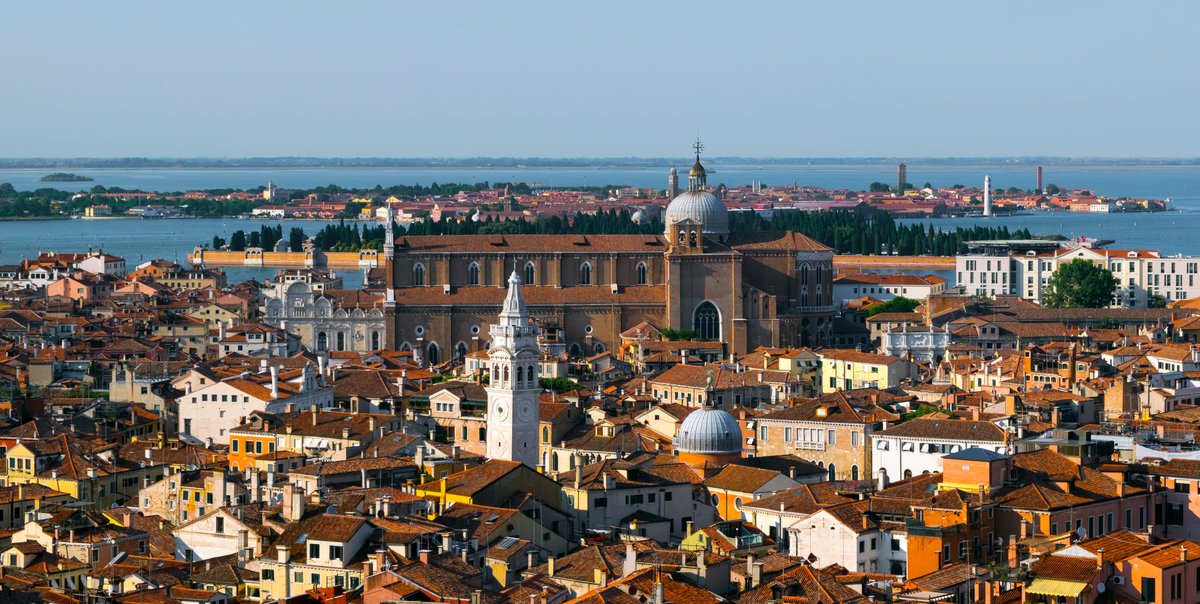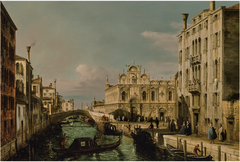
Visiting Scuola Grande di San Marco, Venice, Italy: Tickets, Hours, and Tips
Date: 14/06/2025
Introduction
The Scuola Grande di San Marco, nestled in Venice’s Castello district, is a remarkable testament to the city’s enduring legacy of art, charity, and civic pride. Founded in 1260 as a confraternity for lay citizens, it quickly rose among Venice’s six prestigious “Scuole Grandi”—institutions devoted to mutual aid, religious ceremonies, and social welfare (Scuola Grande di San Marco presentation; The Venice Insider). Distinguished by its Renaissance architecture and masterful works of art, the Scuola also played a defining role in Venice’s cultural and social development.
Today, the Scuola serves both as a museum and the main entrance to Venice’s civic hospital, embodying centuries of adaptation and service to the community. Visitors are drawn to its magnificent marble façade, historic halls, and rotating exhibitions, making it an essential stop for anyone interested in Venice’s history and architectural splendor.
Table of Contents
- Introduction
- Historical Overview
- Visitor Information
- Nearby Attractions
- Events and Photography
- Travel Tips
- FAQs
- Conclusion and Call to Action
- References
Historical Overview
Origins and Foundation
Founded in 1260 as the Scuola dei Battuti, the institution quickly became a hub for mutual assistance, religious devotion, and social welfare. Unlike a modern school, “scuola” here means a confraternity—an association of lay citizens organized for communal benefit (Scuola Grande di San Marco presentation; The Venice Insider). By 1437, it relocated to the Campo Santi Giovanni e Paolo, aligning itself with one of Venice’s largest and most significant churches (A View on Cities).
Renaissance Rebirth
A devastating fire in 1485 destroyed the original Gothic building, prompting a grand reconstruction starting in 1488 under architects Pietro Lombardo and Mauro Codussi (Italyscapes). Their design blended classical Renaissance harmony with local Venetian and Byzantine influences, resulting in a unique architectural masterpiece (A View on Cities; Venice Tourism).
Architectural and Artistic Highlights
The façade is celebrated for its polychrome marble inlays, trompe-l’œil archways, and sculptural reliefs of St. Mark’s life and the iconic Venetian lion (European Heritage Awards; Academia.edu). Seven types of marble, some originally gilded, create a rich visual effect. Interior spaces like the Portego delle Colonne (Hall of Columns) and the Sala Capitolare (Chapter Hall) were historically adorned with major works by Jacopo Tintoretto, Palma il Giovane, and others (Wikipedia). Though many paintings have moved to other museums, reproductions and architectural elements remain.
Social and Civic Significance
As a confraternity, the Scuola organized processions, distributed alms, and provided dowries and support for the needy (The Venice Insider). Its statutes guided members in charity and civic duty. Notable Venetians, including explorers like Alvise da Mosto, were members, linking the Scuola to the city’s global ambitions (Venice Tourism).
Transformation to Hospital
The Napoleonic occupation in 1807 led to the suppression of Venetian confraternities. The Scuola was repurposed as a military, then civic, hospital—a function it still serves (Italyscapes; A View on Cities). While interiors were altered, the façade and some communal rooms survived, now forming part of a museum (WhichMuseum).
Restoration and Present-Day Use
Major restoration campaigns in the 2000s, supported by organizations like Save Venice Inc., preserved the façade and decorative elements (European Heritage Awards). The Scuola now hosts cultural events, exhibitions, and annual celebrations, notably on April 25th, the Feast of St. Mark, when admission is free (Scuola Grande di San Marco News).
Visitor Information
Visiting Hours
- Tuesday–Sunday: 10:00 AM – 5:00 PM
- Closed Mondays and public holidays
- Last admission: 30 minutes before closing
Hours may vary on special occasions—check the official website.
Tickets and Admission
- Standard ticket: €10
- Reduced (EU citizens 18–25): €7
- Free: Children under 18, Venice residents, special open days (e.g., April 25th)
- Purchase at the entrance or online via the official site.
Accessibility
- Main entrance and exhibition areas are wheelchair accessible
- Ramps and assistance available; service animals welcome
Guided Tours
- Daily guided tours in English and Italian (advance booking recommended)
- Audio guides available on-site and via the Audiala app
Nearby Attractions
- Basilica dei Santi Giovanni e Paolo: Next door, one of Venice’s largest Gothic churches
- Campo Santi Giovanni e Paolo: Historic square with lively markets and events
- Rialto Bridge: 20-minute walk; iconic Venetian symbol
- Peggy Guggenheim Collection: Modern art museum a short walk away
Events and Photography
- Annual Feast of St. Mark (April 25): Free entry and special guided tours
- Concerts and Exhibitions: Hosted throughout the year
- Photography: The façade’s marble details and lion reliefs are best captured in morning light; interior photography is allowed (no flash/tripods)
Travel Tips
- Book tickets in advance during peak season
- Arrive early or late for a quieter experience
- Wear comfortable shoes—Venetian streets are uneven
- Combine your visit with a stroll through the Castello district
Frequently Asked Questions (FAQ)
Q: What are the Scuola Grande di San Marco visiting hours?
A: Tuesday to Sunday, 10:00 AM–5:00 PM. Closed Mondays.
Q: Where can I buy tickets?
A: At the entrance or via the official website.
Q: Is the site accessible?
A: Yes, main areas are accessible and assistance is available.
Q: Are guided tours available?
A: Yes, in English and Italian—advance booking recommended.
Q: Can I take photos inside?
A: Yes, but no flash or tripods.
Q: What are nearby attractions?
A: Basilica dei Santi Giovanni e Paolo, Rialto Bridge, Peggy Guggenheim Collection.
Conclusion and Call to Action
Visiting the Scuola Grande di San Marco offers a unique window into Venice’s artistic and civic achievements. With its breathtaking façade, rich history, and ongoing cultural significance, it stands as a must-see for travelers. Plan your trip by checking hours, booking tickets, and downloading the Audiala app for immersive audio guides and updates. For more insight, explore related articles on Venice’s historical sites and follow our channels for travel tips and event news.
Your Venetian adventure awaits—immerse yourself in the story of the Scuola Grande di San Marco and experience the living legacy of Venice.













































































































